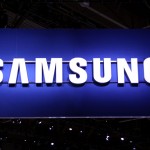Copper gained for the first session in three amid continuous signs of robust economic recovery in the US and as a gauge of the dollar slid after the euro regained positions. However, worries about the industrial metals demand outlook in top consumer China capped gains.
Comex copper for delivery in March traded 1.03% higher at $2.9015 per pound at 14:22 GMT, having shifted in a daily range of $2.9300-$2.8670. The industrial metal fell by 0.67% on Wednesday to $2.8720, extending the prior sessions 0.22% drop.
The metal climbed as a continuously improving US labor market fanned optimism about the worlds biggest economy and a major consumer of base metals. The Labor Department reported on Thursday that the number of Americans who filed for initial unemployment benefits in the week ended November 29th slid as expected to 297 000 from an upward-revised 314 000 a week earlier. Continuing jobless claims, however, jumped more than projected to 2.362 million from 2.323 million during the preceding period.
On Friday, the Labor Department’s all-important jobs report might show a persistent strengthening of the US labor market, with November’s nonfarm payrolls expected to come in at 225 000, compared to 214 000 in October. The unemployment rate is projected to have remained unchanged at a multi-year low of 5.8%. Automatic Data Processing reported on Wednesday that US non-farm employers opened 208 000 jobs last month.
Euro area stimulus
The red metal also drew support as the US dollar retreated from a two-year high against the euro after the ECB left interest rates unchanged, while President Mario Draghi gave little detail on any new stimulus measures. Draghi said there was a “vast majority” of the Governing Council who agreed with the banks new balance sheet expansion targets, but that the decision was not unanimous.
The US dollar index for settlement in December was down 0.24% at 88.780 at 14:22 GMT, having earlier risen to 89.200, the highest since March 2009. The US currency gauge rose 0.33% on Wednesday to 88.993. A stronger greenback makes dollar-denominated commodities more expensive for holders of foreign currencies and curbs their appeal as an alternative investment, and vice versa.
However, Mr. Draghi also confirmed that the latest Eurozone macroeconomic projections indicate lower inflation which will be accompanied by slower growth and that economic recovery will probably be dampened by high unemployment. Inflation within the single currency bloc was projected at 0.5% this year, 0.7% in 2015 and 1.3% in the year after.
Although Mr. Draghi did not provide much detail about future policy moves, he said that the Governing Council remained unanimous to its commitment to using unconventional instruments to address the risks of a prolonged period of low inflation. The ECB did not need unanimity for QE purchases and has discussed all types of assets purchases apart from gold, Draghi added.
Data earlier in the week showed that manufacturing activity in powerhouse Germany contracted in November, while business activity in the Eurozone as a whole expanded slower than expected.
China concerns
Despite optimism with regards to the US economy and expectations for stimulus expansion in the euro area, the industrial metals upside movement was checked as fears of stalling activity in top consumer China haunted the market.
The National Bureau of Statistics reported yesterday that China’s services sector expanded at a faster pace in November compared to a month earlier, with the corresponding non-manufacturing PMI coming in at 53.9 from 53.8 in October.
A separate private report by HSBC and Markit Economics pegged the HSBC China Services PMI at 53.0, better than the expected 52.5 and above October’s 52.9 reading, as new order intakes at service providers increased at the fastest rate since May 2012.
However, the HSBC Composite Output Index posted at 51.1, which albeit remaining above the level 50 expansion-contraction threshold, signaled a marginal rate of growth that was the weakest in six months. The manufacturing gauge, which was released on Monday, showed activity in the respective sector was at the expansion-contraction threshold last month.
The Peoples Bank of China surprisingly cut interest rates in November for the first time in more than two years in an attempt to jump-start the cooling Asian economy, but analysts saw the measure having little effect on the copper market.
Hongbin Qu, Chief Economist, China & Co-Head of Asian Economic Research at HSBC, said in a report that the rate cut should help stabilize demand but further monetary and fiscal easing will be required.
Some support was drawn after a fire burst at Mongolias Oyu Tolgoi copper mine, with no immediate assessment of the impact on production, but it was brought under control.





